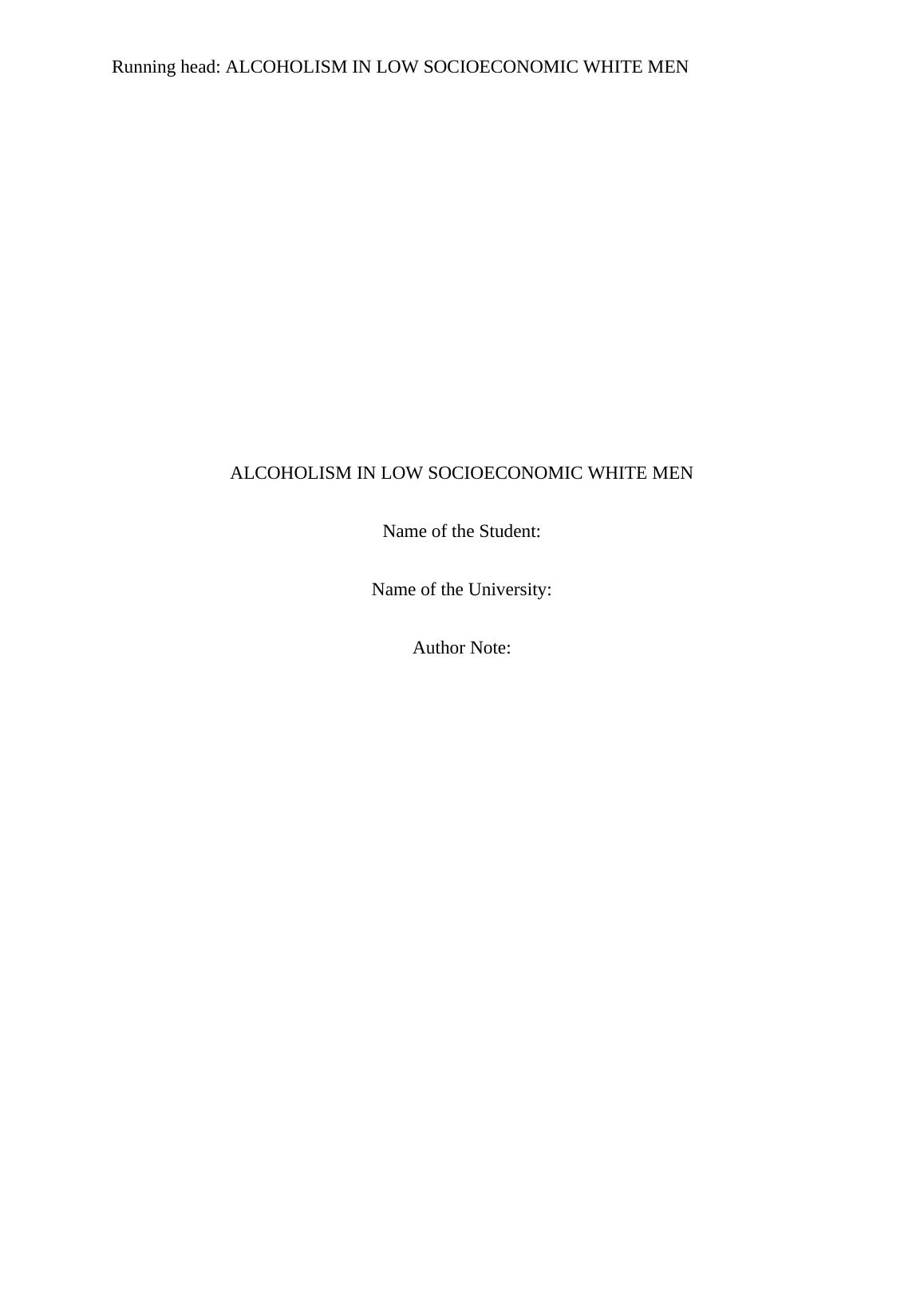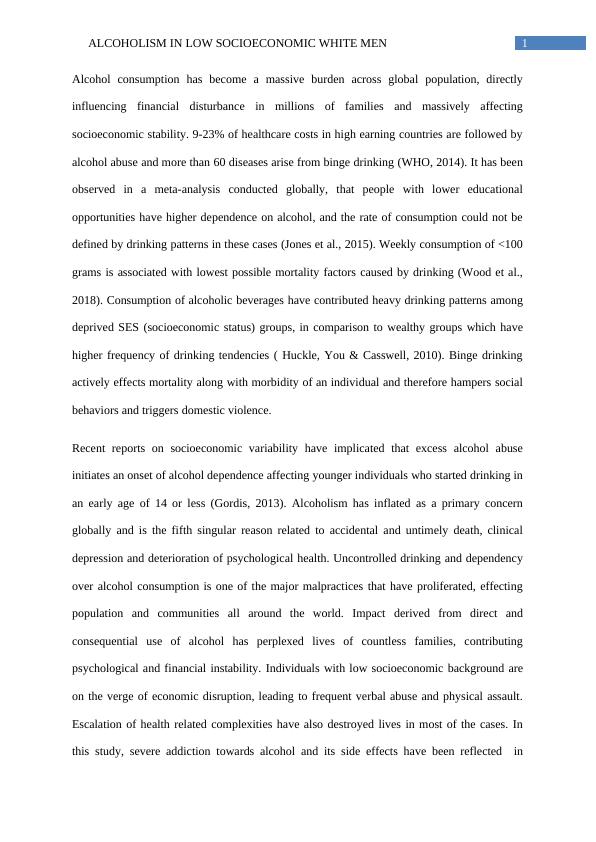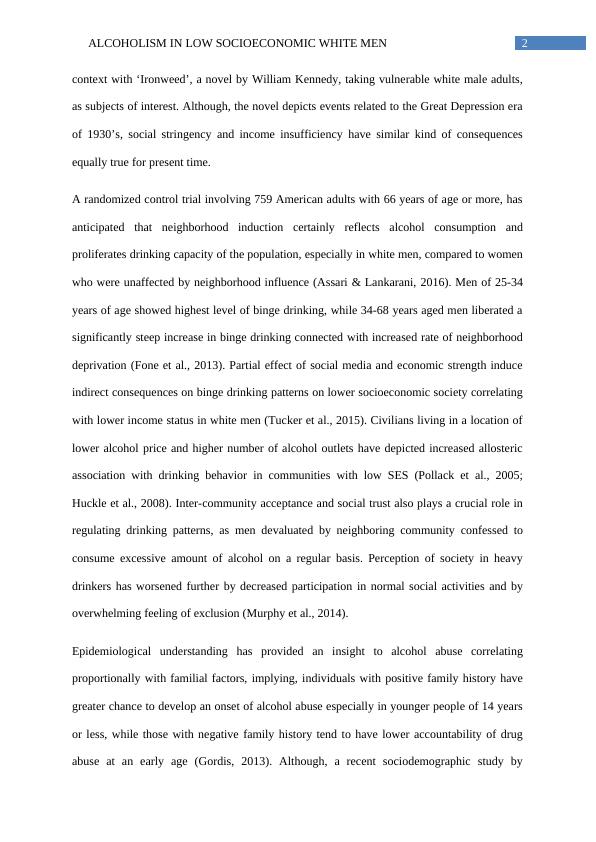Alcoholism in Low Socioeconomic White Men
Using the book 'The Ironweed' as a case, this project explores vulnerability and health disparity in a specific population using principles and tools from epidemiology, nursing, and public health.
11 Pages3604 Words2 Views
Added on 2022-12-29
About This Document
This article examines the impact of alcoholism on low socioeconomic white men, including its effects on their health, families, and communities. It discusses the relationship between alcohol consumption and socioeconomic status, as well as the increased risk of various health issues such as cancer, stroke, and liver disease. The article also explores the novel 'Ironweed' by William Kennedy as a case study.
Alcoholism in Low Socioeconomic White Men
Using the book 'The Ironweed' as a case, this project explores vulnerability and health disparity in a specific population using principles and tools from epidemiology, nursing, and public health.
Added on 2022-12-29
ShareRelated Documents
End of preview
Want to access all the pages? Upload your documents or become a member.
Alcohol Consumption: A Case Study on Alcohol Dependence and its Effects on Physical and Mental Health
|14
|3728
|318
Alcohol Addiction in Early Adulthood (Doc)
|5
|956
|202
Alcohol Consumption and Strategies to Reduce its Use in Australia
|11
|2945
|436
Alcohol Abuse: Impact, Disorders, and Support Services
|18
|1169
|44
Social Welfare in Canada Assignment
|13
|3422
|19
Psychology of Drug Addiction: Effects of Alcohol and Illicit Drugs
|14
|2843
|336




